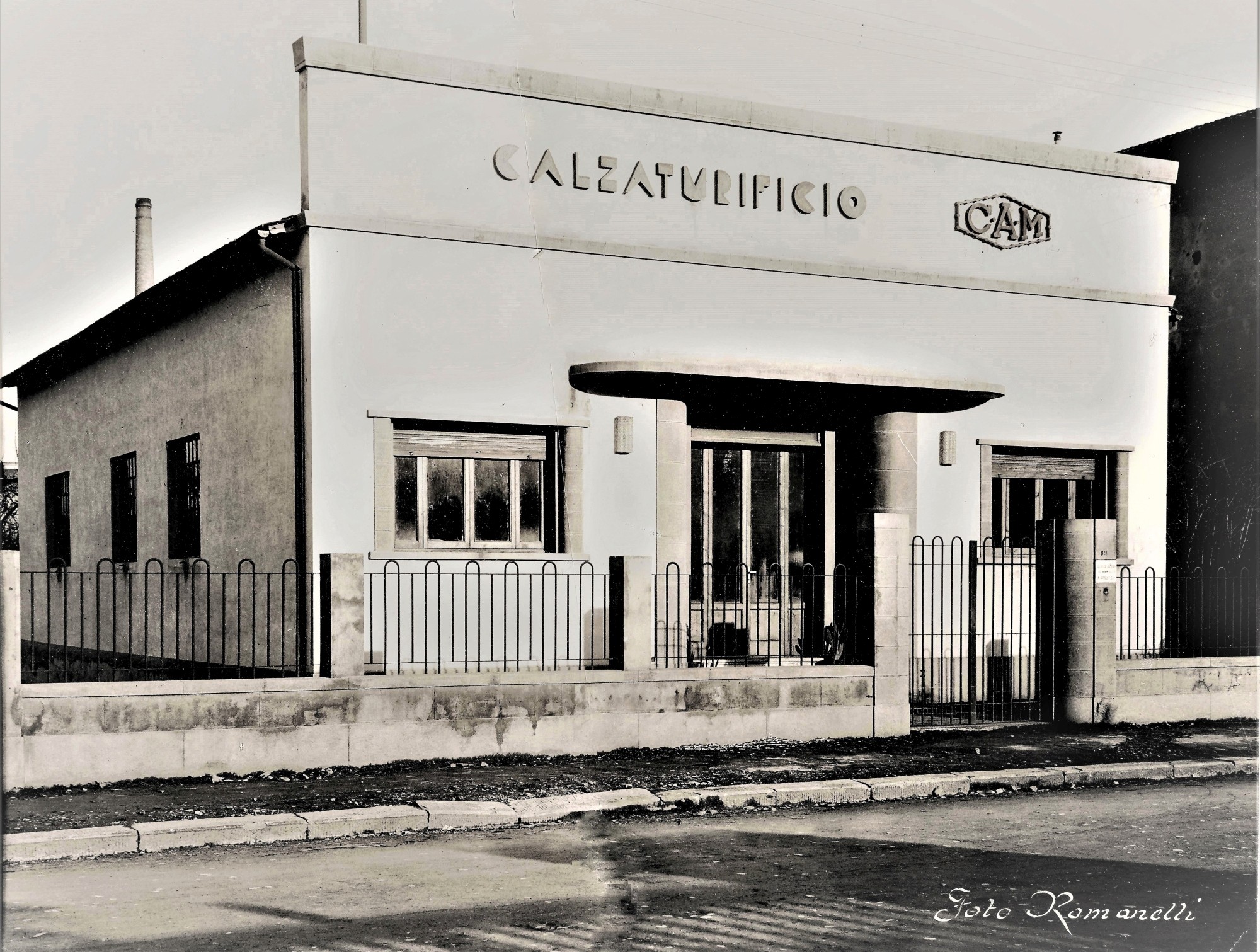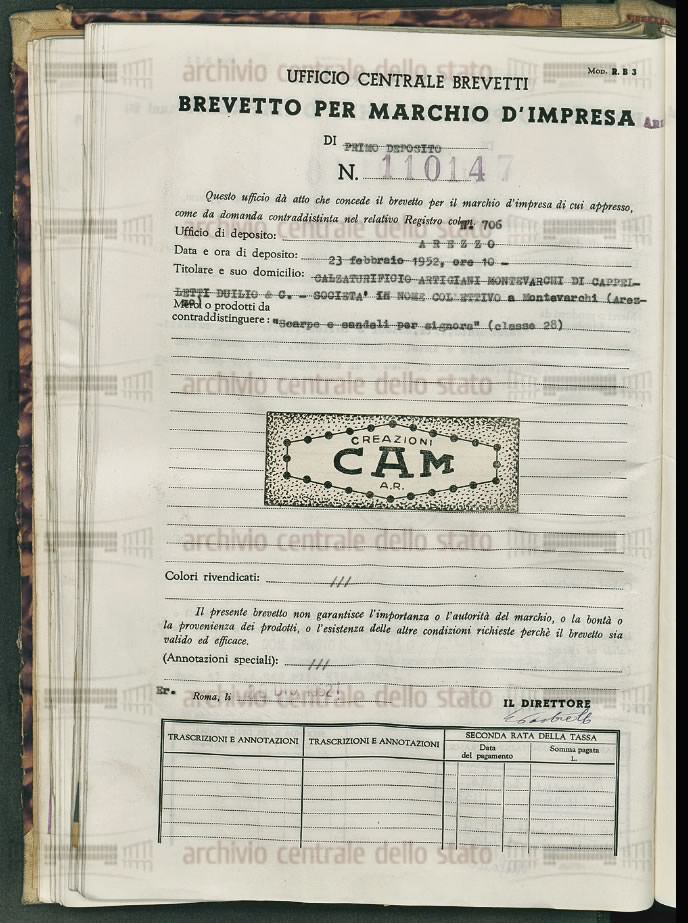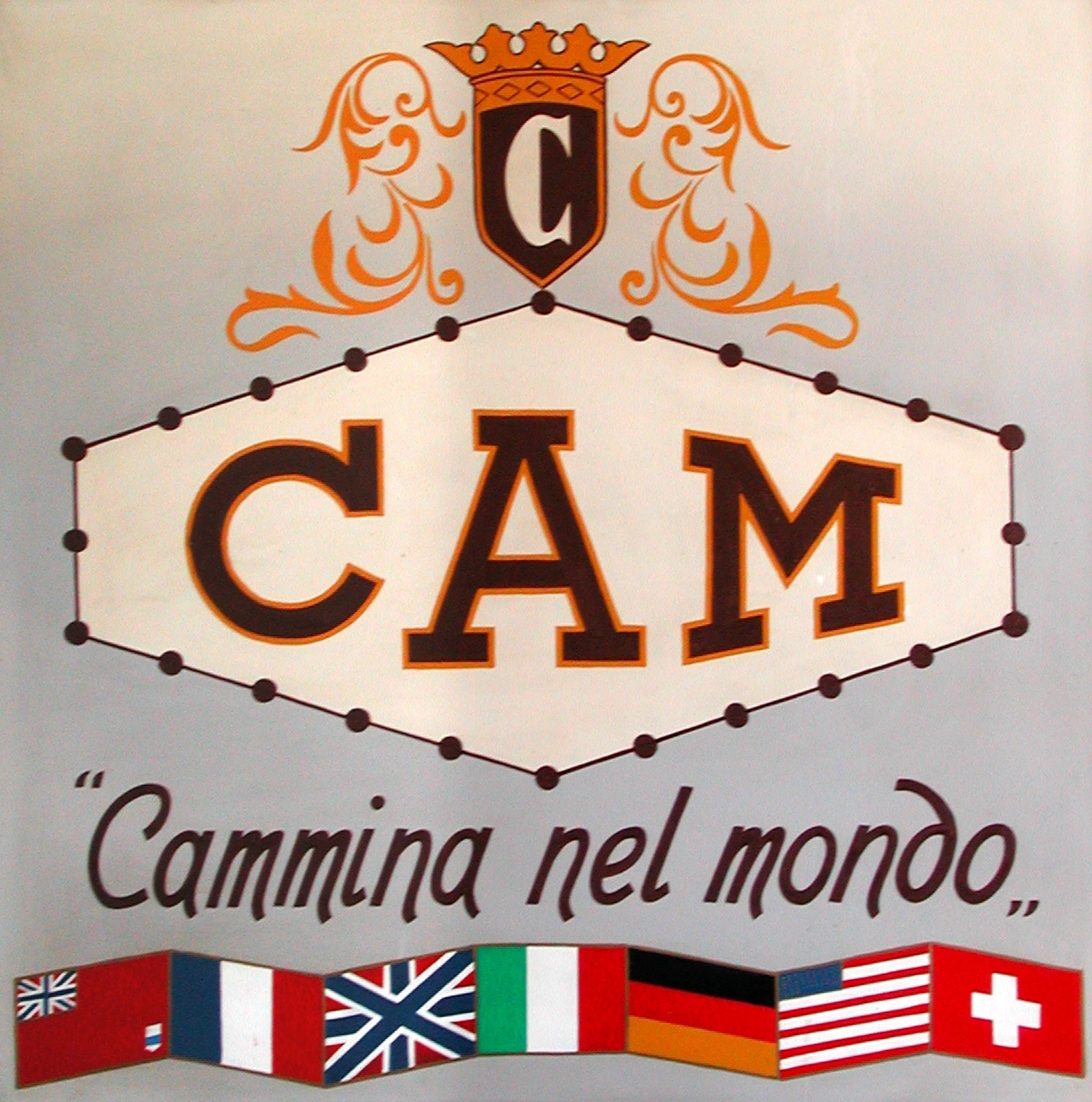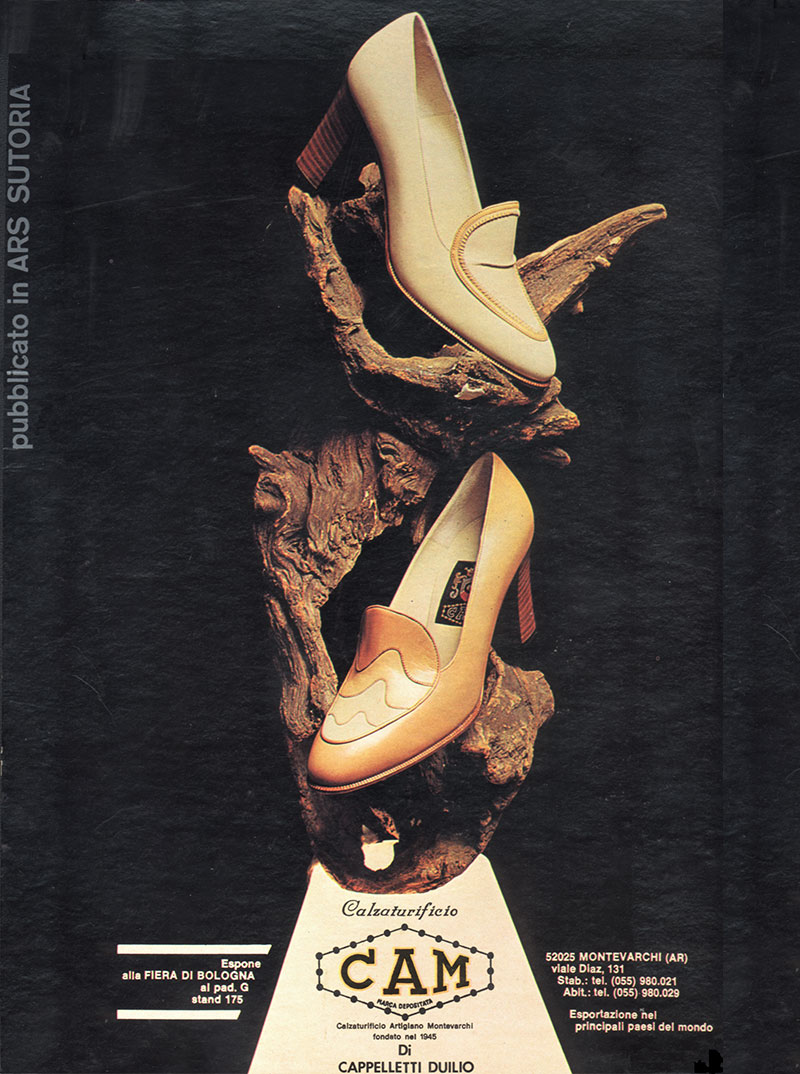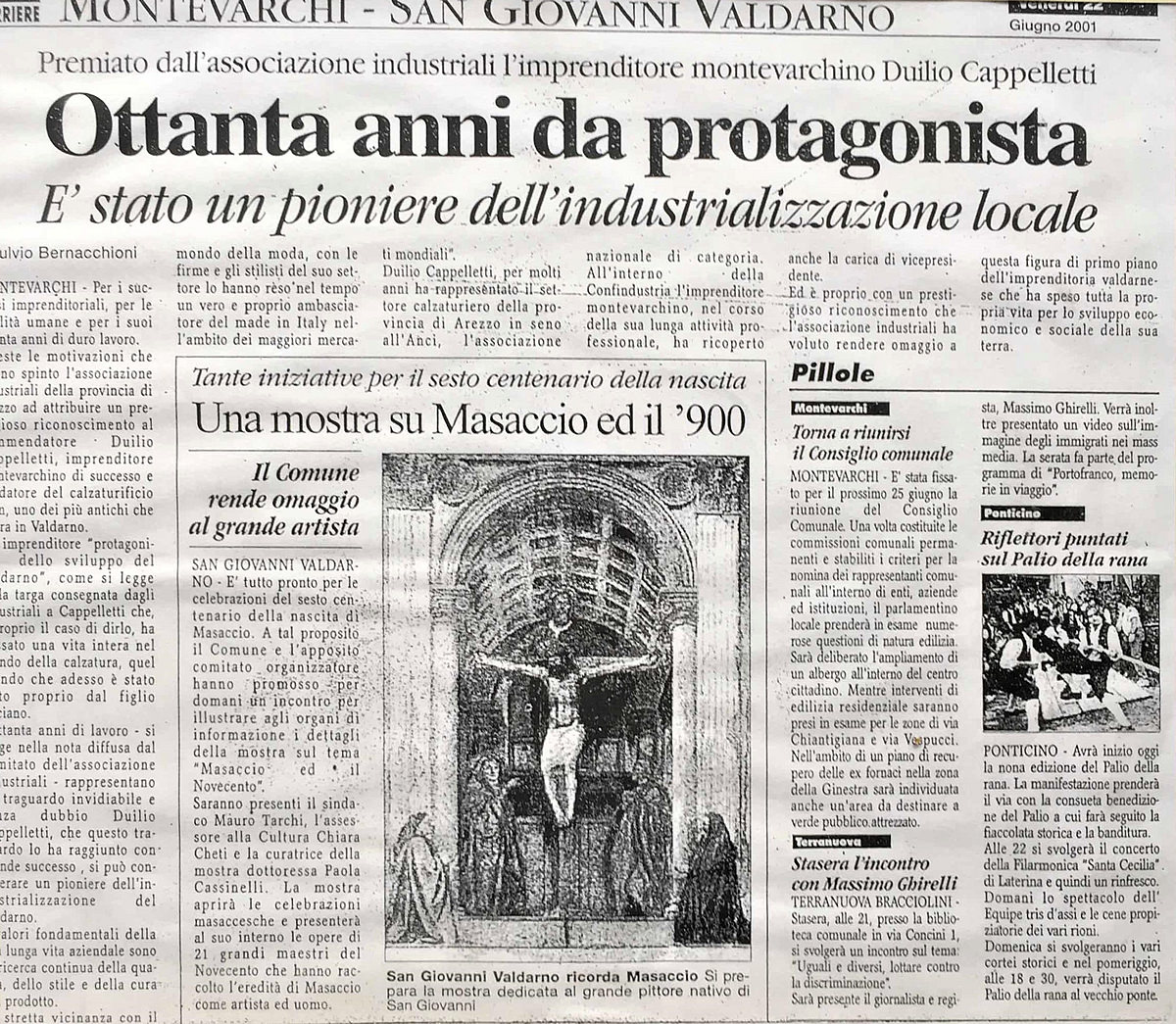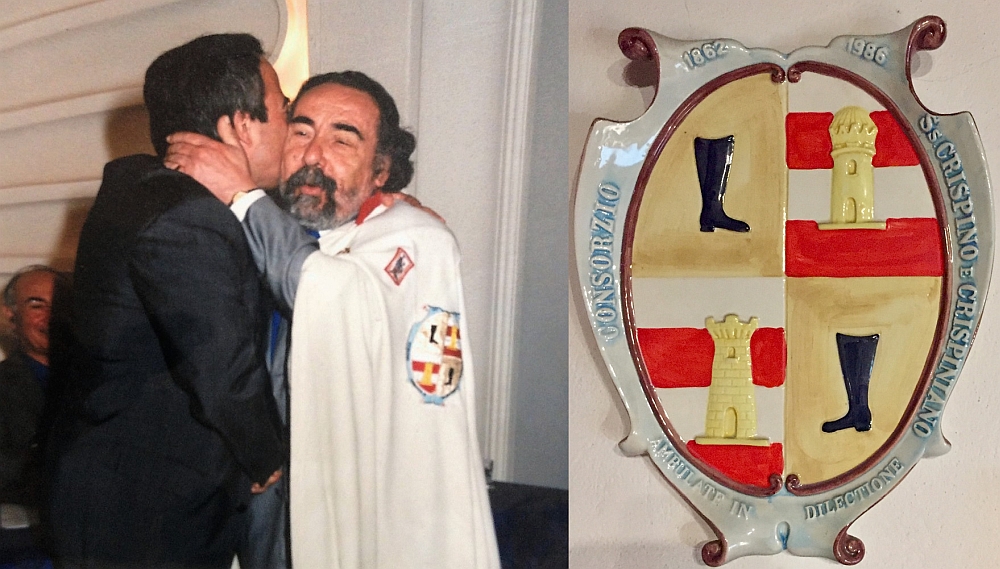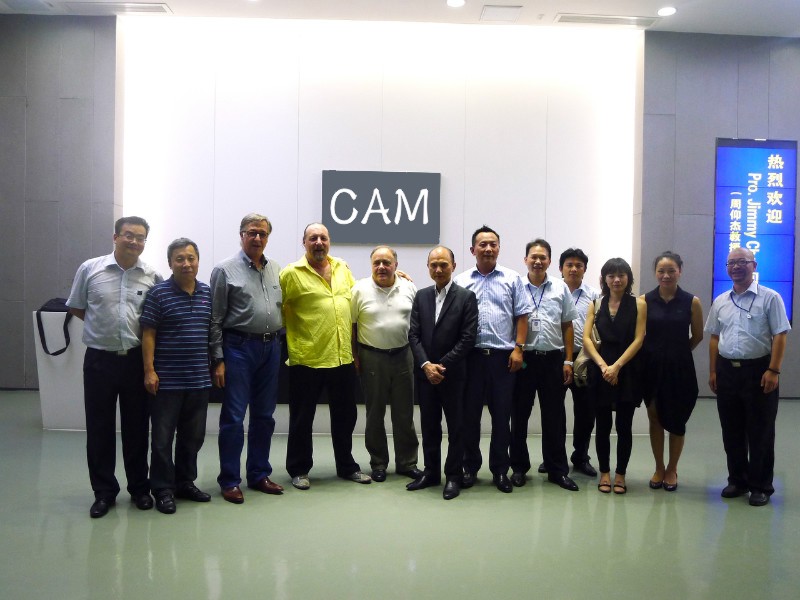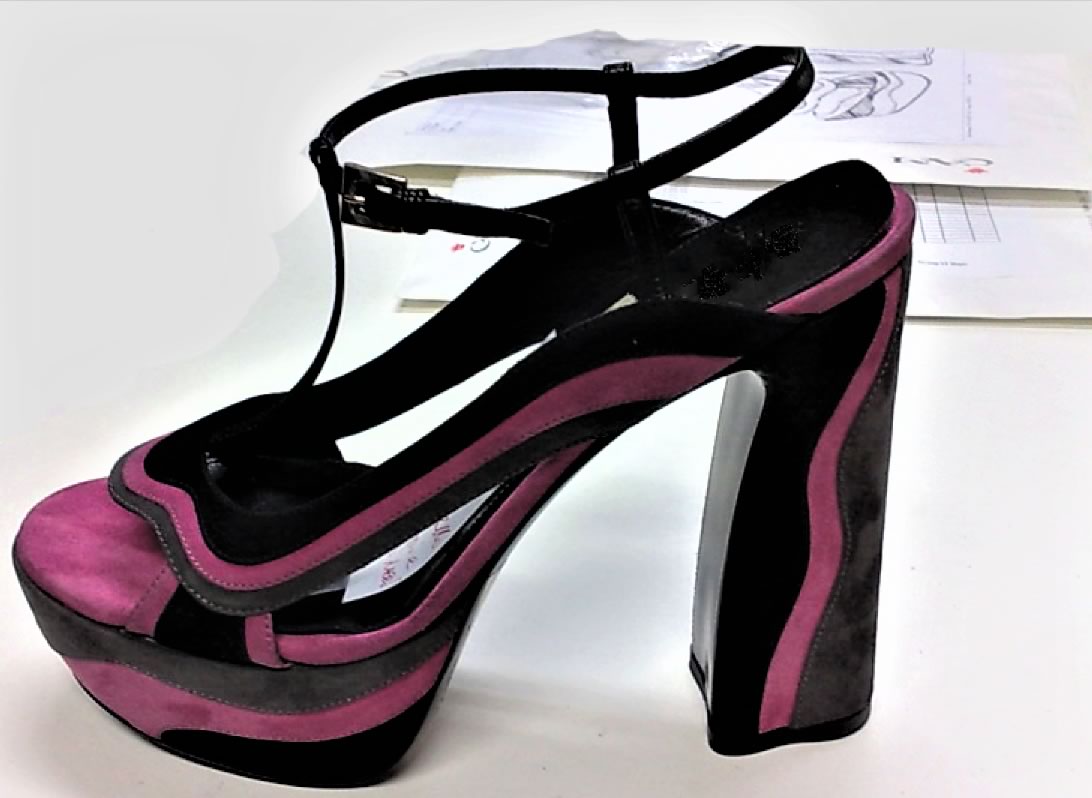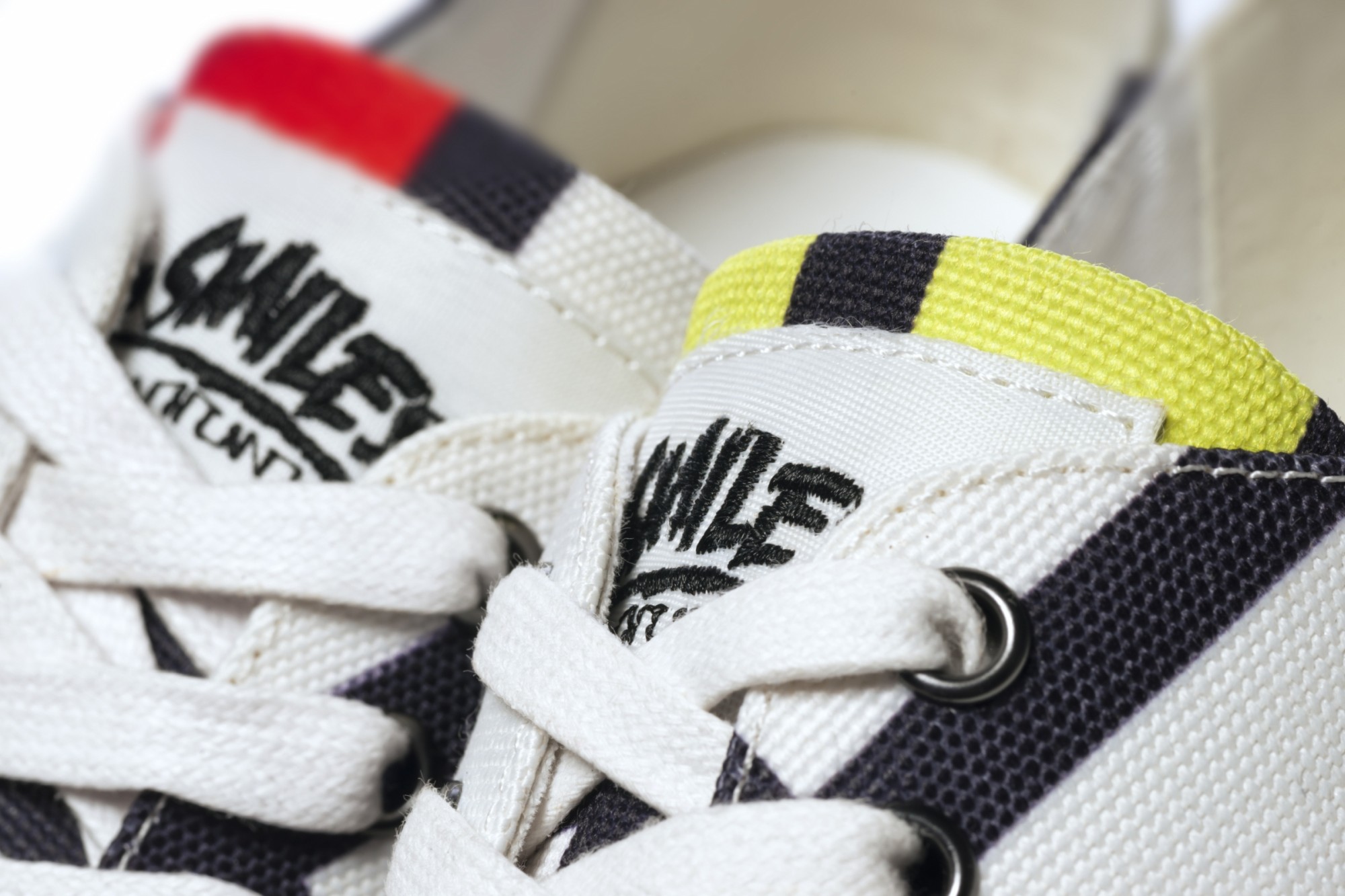Cappelletti Family
The story of the C.A.M trademark intersects with the story of the Cappelletti family and the C.A.M factory.
The C.A.M. story first took root at the turn of 20th century. Creative and tenacious, Giuseppe Cappelletti begins repairing and producing made-to-order shoes in Caposelvi, a hamlet just outside Montevarchi near Florence. It didn’t take long before well-heeled clientele began taking notice of the fine, hand-crafted shoes of Cobbler Cappelletti of Caposelvi, as he names his little shop. Encouraged, Giuseppe opens a larger storefront in Montevarchi at that time, a prosperous city already acclaimed around the world for hat manufacturing.
At the age of 7, his son Duilio begins spending time in his father’s workshop, sparking his own passion for footwear.
He works alongside Giuseppe until called up for service in World War II.
Calzaturificio Artigiani Montevarchi is Born
Duilio and a group of local cobblers organize the first shoemaking cooperative, initially located in a small space by the city.
They settle on the befitting name C.A.M., Calzaturificio Artigiani Montevarchi, and begin producing shoes, quickly achieving success.
Around 1950, the cooperative moves to a larger space outfitted with the latest machinery and increases its production output.
Its footwear is highly sought-after by female consumers and C.A.M.’s fame grows exponentially, so much so that in February 1952, C.A.M. registers as a trade mark to protect the C.A.M. brand, still held by the Cappelletti family today.
A walk around the world with C.A.M
The economic boom of the 1960s contributes to the international reputation of elegant Italian footwear. C.A.M. understood that the market wanted fine, high-quality shoes at a time when its own shoes were selling well in the marketplace. In hindsight, one might say that the company led the way to the world acclaim later achieved by the Made in Italy brand.
One curious footnote: the first C.A.M. footwear collection sent to the United States went down with the ocean liner Andrea Doria in 1956, a tragic baptism by sea.
Thanks to early successes, in the 1970s C.A.M. expands its production output, achieving a higher level of quality and design that allows it to forge even greater inroads into the high-fashion market.
Between 1970 and 1980, Italy establishes itself as a world-famous hub and reference point for superior quality high-fashion footwear.
Commercial affirmation
After working alongside his father for a decade, Luciano Cappelletti steps into the role of company director in 1982, revitalising a family tradition that brought about C.A.M.’s rise to industry leader. The company sees an ever-expanding worldwide sales and distribution network for the C.A.M. brands, Pierre Cardin by C.A.M., and Luciano Cappelletti Firenze, site of its showroom and the historic Campionaria and the International Show of Italian Footwear trade shows, attracting buyers from all over the globe.
Luciano stays active in the industrial fashion district in the province of Arezzo and, along with his father, represents C.A.M in ANCI (Association of Italian Shoe Manufacturers) and in the Italian Confederation in Milan and its local chapter in Arezzo.
Industry leader for over 70 years
At the twilight of his career, Luciano’s father Duilio, having excelled in the craft of shoemaking for over 70 years, is awarded the Fedeltà al Lavoro prize in the Vigevano Abbey dedicated to Saints Crispino and Crispiniano, protectors of shoemakers, an honour bestowed on the greatest Italian shoemakers.
Challenges of globalisation
Luciano’s five children enter the family business, representing the fourth generation of Cappelletti shoemakers. Anticipating the arrival of the global crisis of 2008, his eldest son Francesco makes the decision to move production to Tunisia and China to maintain the company’s competitive edge, while the designing of collections remains in Italy.
The company opens two production facilities: one in Guangzhou in Southern China for the upper part of the shoe, and in Tunisia where, along with the shoe’s upper part, the manufacturing of moulds, cushioning inserts, shanks, straps, insoles, and heels takes place, creating a complete mounting kit for assembly in Italy, achieving significantly lower manufacturing costs while upholding the quality and integrity of the Made in Italy brand.
Brands & Design
At the turn of the 21st century, overseas production and the marketing and design of footwear in Italy become less commercially viable.
The Cappelletti family, as owners of the C.A.M. trademark registered in Italy and in major countries worldwide, enters into royalty-based licensing agreements with retailers headquartered in Italy, Germany, China, Russia and Tunisia.
Today, C.A.M footwear is produced and sold by companies selected for both their quality/price ratio and fair trade practices that continue to uphold C.A.M footwear’s international focus.
Luciano Cappelletti children guarantee the quality of every collection entrusted to third-party manufacturers in the spirit of the original, elegant shoe created from the highest-quality materials, a signature of C.A.M. footwear for over 75 years.
Sneakers Smiles Authentic
On a work trip to Guangzhou (formerly Canton) China in May 2010, Luciano and son Francesco created and patented an original line of whimsical sneakers based on an idea suggested by Luciano’s daughter Margherita, once again in the spirit of originality and tradition, enduring hallmarks of the family.
The Smiles Authentic Sneakers line is licensed for manufacturing and marketing through an exclusive, royalty-based agreement per nation.

